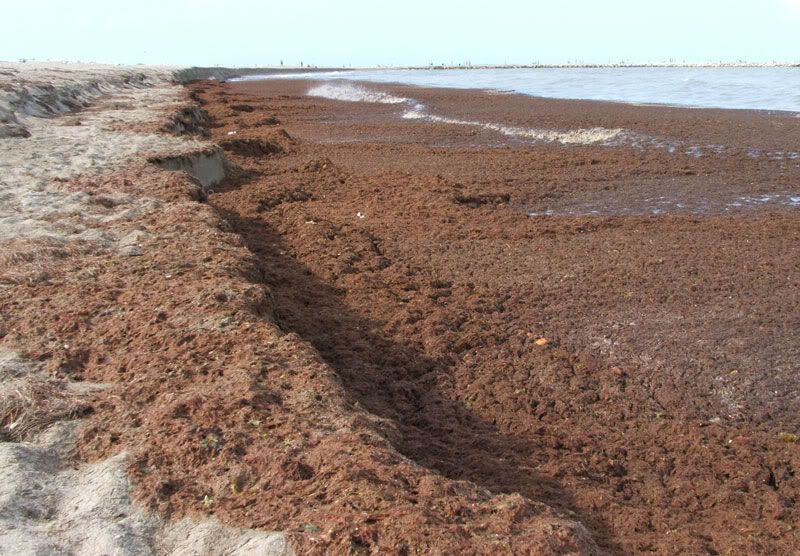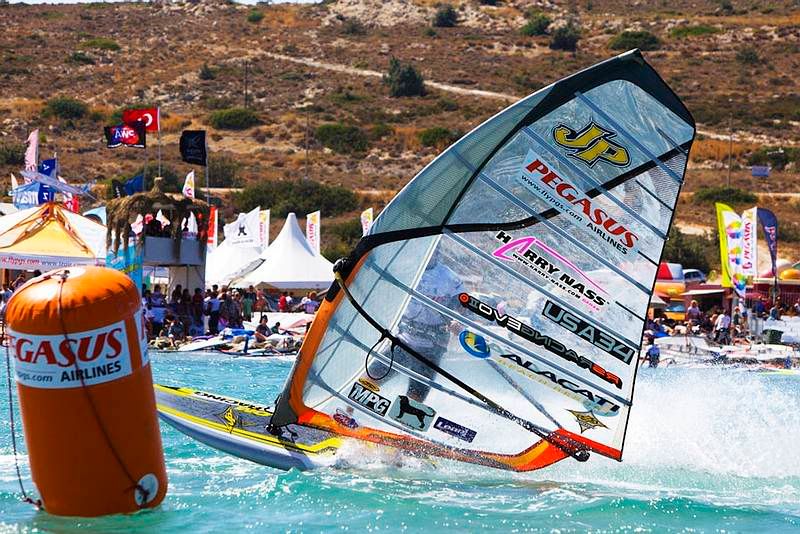There's something weird going on in the tropical Atlantic. A few days ago we'd had no named storms for 2009, but now we've got Ana, Bill, and Claudette all churning away simultaneously. The weather associated with Claudette brought a little wind to South Florida this weekend, but it was frustratingly inconsistent for windsurfing in Fort Pierce. It always fizzled to below 10 knots as soon as I pulled up in the minivan. :( I could have gone for a shlogging or longboard session, or a swim, but the water was unappealing, to say the least, on account of a rotting stew of macroalgae smothering the beach.




The likely reasons for the massive, disgusting algae mass are:
1) "Eutrophication"; the over-stimulation of algae growth by sewage and fertilizer runoff
2) Lack of sufficient numbers of manatees, green turtles, and herbivorous fish and invertebrates to eat it up
3) The jetty interacting with the prevailing wind and swell to concentrate the algae on its south side
Anyway, I decided to brave the algae this morning because the wind looked good. iWindsurf was registering SE 19 mph with gusts to 23 mph at the Fort Pierce Coast Guard Station, so I excitedly grabbed my still-unused waveboard off the rack and stuffed it in the Red Rooster (new name for the minivan). Of course it was barely whitecapping once I got to the beach. Since the weeds and shorebreak looked unfriendly for formula windsurfing, and since my friend Marc was coming later to kite, I decided to blow up my 12 m kite. I'd just had the leaky leading edge repaired, so I figured everything was peachy. Unfortunately, I discovered two additional struts had developed leaks since my last kiting attempt. Doh!
I suspected the nipples. Kite bladders have very poorly attached nipples, which peel off easily, especially in hot, humid cars or minivans. Sure enough, when I removed the offending bladders back at my house, they both had peely nipples. Uh huh huh, huh huh.

I stuck them back on with shoe goo, but then I didn't wait long enough to re-insert the bladders, and one of them peeled off again. Now it's just a mess, and I probably need to get the whole bladder professionally repaired or replaced. Kiting is a horrible aggravation, and I'm thinking seriously about quitting it altogether. Yeah, it's fun when the conditions and your gear are perfect, but that never happens. And the gear is intolerably flimsy and delicate for stuff so expensive. Grrr.
I salvaged some sort of session on my formula windsurfing gear, but by then it was too light to plane even on that, so I mainly just got worked in algae-soup shorebreak at either end of a long sweaty shlog. So yeah, definitely the year's worst session.
















